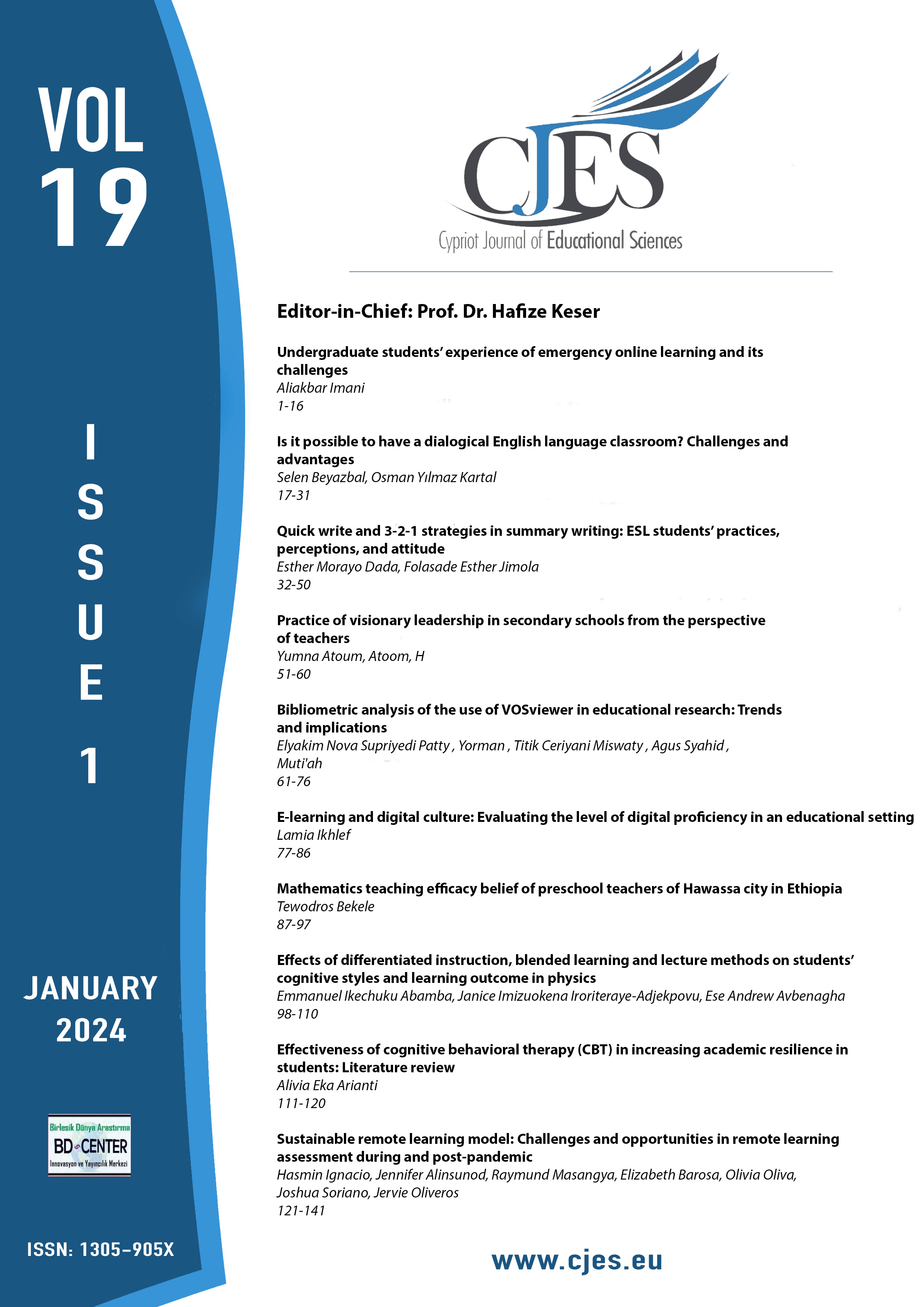Practice of visionary leadership in secondary schools from the perspective of teachers
Main Article Content
Abstract
The current study aimed to identify the degree of practicing visionary leadership in secondary school leadership from the point of view of teachers in Jerash Province. To achieve the goals of the study and answer its questions, a descriptive survey approach was used to develop the questionnaire. The study sample consisted of 315 teachers who were chosen randomly. The questionnaire was used as a study tool consisting of 31 items consisting of three areas (vision, communication vision, enabling vision) after its validity and reliability had been confirmed. The results showed that the degree of practicing visionary leadership of the secondary school leadership from the point of view of teachers in Jerash Governorate was an average degree. The current study recommended the importance of developing the visionary leadership of secondary school principals in all areas by holding specialized training courses on school leadership. This study provides a different perspective on visionary leadership among leaders in schools, as it captures teachers' perspectives on leaders' practice of visionary leadership.
Keywords: Leadership; secondary school leadership; teachers; visionary leadership.
Downloads
Article Details

This work is licensed under a Creative Commons Attribution 4.0 International License.
Cypriot Journal of Educational Sciences is an Open Access Journal. The copyright holder is the author/s. Licensee Birlesik Dunya Yenilik Arastirma ve Yayincilik Merkezi, North Nicosia, Cyprus. All articles can be downloaded free of charge. Articles published in the Journal are Open-Access articles distributed under a CC-BY license [Attribution 4.0 International (CC BY 4.0)].
Birlesik Dunya Yenilik Arastirma ve Yayincilik Merkezi (BD-Center)is a gold open-access publisher. At the point of publication, all articles from our portfolio of journals are immediately and permanently accessible online free of charge. BD-Center articles are published under the CC-BY license [Attribution 4.0 International (CC BY 4.0)], which permits unrestricted use, distribution, and reproduction in any medium, provided the original authors and the source are credited.

